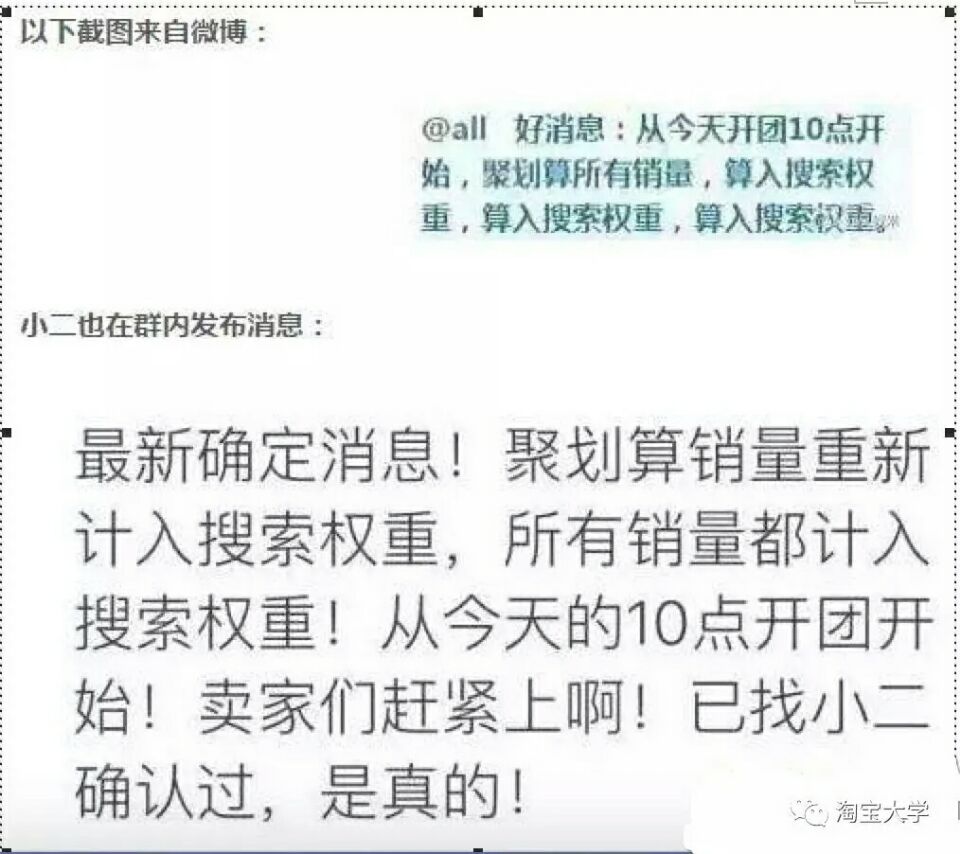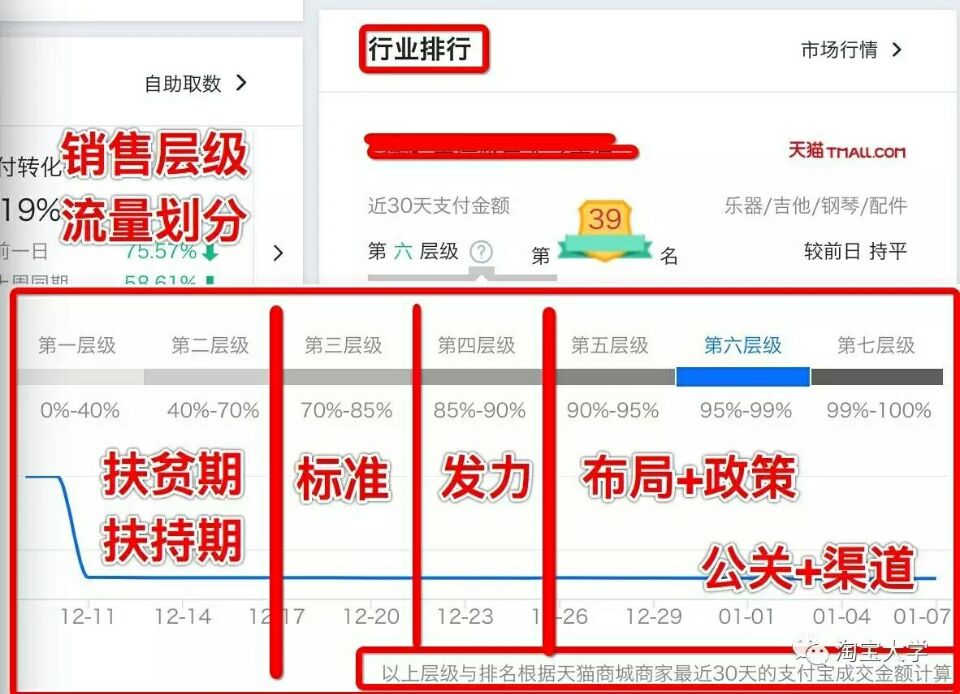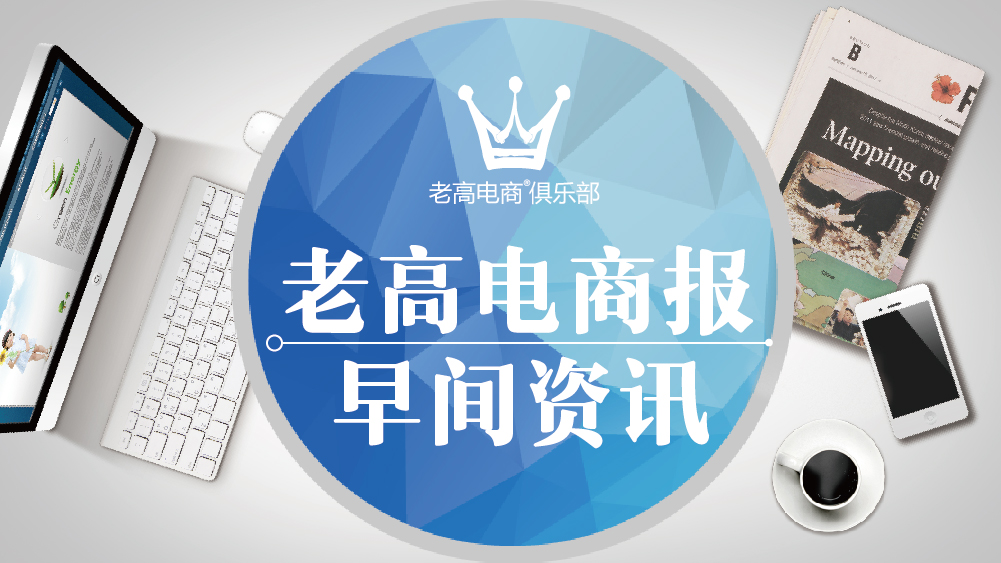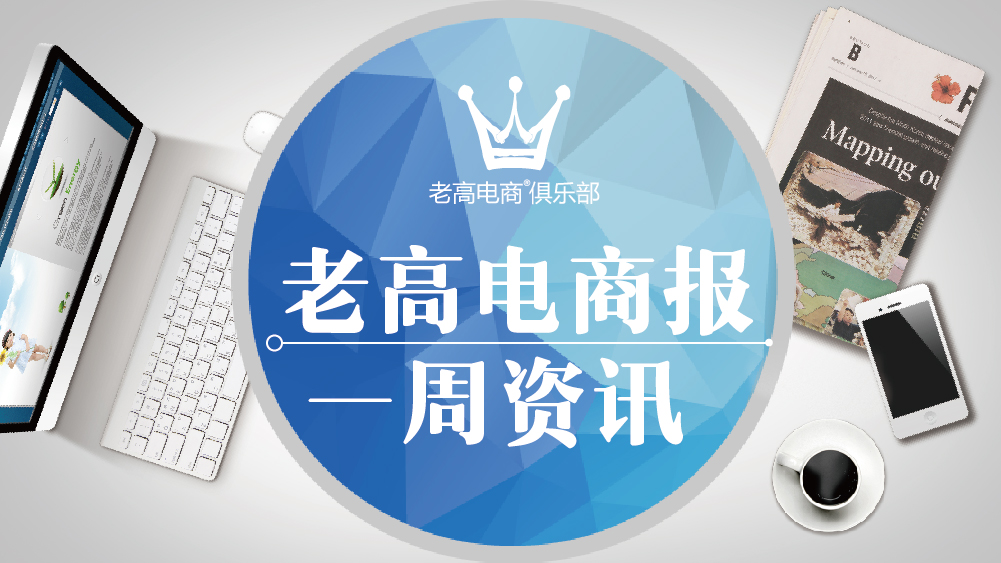Most readers do not know what the logic is about the policy direction of the platform and the sharing principles of various types of merchants, nor do they know what the category they are in and how their stores should set sales goals? What is the "weight" we have always called on this basis? How is it determined? Today we will talk about: Interpreting what "weight" is, and the platform's hierarchical formulation of merchants, helping merchants formulate store development plans and development goals from the perspective of the platform-
Interpretation of weights
Weight is a relative concept. The weight of an indicator refers to the relative importance of the indicator in the overall evaluation. Weights are to distinguish the severity of several evaluation indicators. The corresponding weights of a set of evaluation indicator systems form a weight system.
So what does e-commerce mean? Borrow the following figure to explain:

"Juhuasuan", "Sales", "Included", "Search", "Impact"
The above picture has been forwarded in major e-commerce forums and discussion groups to cause discussion. If the keywords are separated, you can get the above information: the sales volume of a sales channel is included in the search, whether the platform policy has an impact and impact on the current merchant ranking and operations. As of now, this policy has been implemented, but it has not had any predictable impact on the market. Therefore, let’s interpret the word “weight” and this phenomenon.
The accumulated temperature phenomenon
The impact of temperature on the growth and development of crops and temperature-changing animals, including temperature intensity and duration. Accumulated temperature is an agricultural meteorological indicator that measures the comprehensive effects of these two aspects. Some people also regard accumulated temperature as a heat indicator. Over the past few decades, agricultural meteorological workers have conducted in-depth and extensive discussions on the calculation methods and applications of accumulated temperatures and the stability of accumulated temperatures.
For example: The sun exposure time in the north and south is different, and the "daily" temperature (intensity) + (total sun exposure time) obtained by plants are different. The daily sun exposure time and sun exposure temperature are combined, which is called "accumulated temperature".
Theoretical application
The accumulated temperature phenomenon is applied to the operation of e-commerce platforms
The temperature obtained by sun exposure is equivalent to "sun exposure" = "sales" on the platform. There are diversified sources and channels for obtaining sales. There are platforms that add different points to "temperature" = "points" according to consumer needs. In summary, different sales channels have different points to the product (the platform calls it popularity points). The higher the score, the better the product indicators and the higher the ranking; the evaluation criteria for popularity points are determined by the platform. What merchants need to do is to cater to the platform, understand the composition of weights, and add points channels that affect popularity points, and then do corresponding actions to increase product weight.
Practical application
Cumulative points statistics: Popularity points (cumulative points system)
Popularity points have weights for searches, so how do you understand the calculation of popularity points?
Search click: Transaction conversion → +10 points
Direct train: Transaction conversion → +7 points
Taobao customer: (Commissions are higher than 40%) are downgraded proportionally or not (maybe downgraded)
Large Events: (No points before)
Old customer: The official has not announced it. The author personally believes that he should rank second in search clicks.
Weight Points System
Because of the "weight" points system, the foothold of competition has been ensured to become relatively equal and fair, and because of the cyclical variability of the "point weight" also ensures that there will be no single dominance and there will be periodic changes. Therefore, merchants should pay attention to what the platform advocates. If the sales volume increased by some low-price traffic and event promotions are not at the same level as the sales volume brought by daily operations, the weight is very important.
At present, there is news about Juhuasuan plus points weighted calculation records (this statement was already said before the New Year, and it is confirmed now), that plus points will not be fully added, and the impact on the entire market ranking will not be very big.
Summary: The interpretation of weights helps merchants and readers understand the platform rules, as well as corresponding trends and phenomena. What corresponding countermeasures should be made are crucial for store operation decisions.
Among them, the focus should be on:
What exactly is the weight? An indicator of a comprehensive concept, a criterion for judging the comprehensive ranking of products;
What impact will it have on the store? Factors affecting product ranking, product comprehensive competitiveness, and review;
How should it be used? Use reasonable sales channels and make sales channels based on platform development policies.
How to distinguish the weight of the baby in the store and how to layout the entire store
First, (All treasures in the store are sorted in a comprehensive order) This method is effective for Tmall stores, for reference only:

As shown in the figure above, the weights are sorted in order, and the areas A, B, C, and D are divided:
Area A mainly recommends baby rankings, don’t use bad sales channels to promote, use extra points;
Area B profit, second-tier products, reserve hot products, or profit products;
Official activities in District C, preparation of activity payment products for registration activities;
Area D third-party event baby.
According to the comprehensive ranking of all babies, you can identify factors such as the situation of your products through different sales channels, consumer feedback, etc. We cannot accurately calculate the specific scores of "weights" and "points", but we can use this phenomenon to make corresponding and correct evaluations of our own store products, which will facilitate future product management and operation decisions.
Platform stratification principle of merchants
With the development of e-commerce platforms, the platform has vigorously developed back-end development based on the platform's "consumer users" this year to serve consumers well, and it is extended to: the platform divides and matches traffic according to different store sales levels of different merchants, providing guaranteed traffic, basic traffic and traffic support for merchants at all levels.
Store operations must have "self-knowledge"
One of them must be: know the goal and set the direction. Most people don’t know what their current situation is and what’s next, and they don’t have “self-knowledge” about themselves. A car runs fast and needs to hold the steering wheel tightly. Many businesses are vague about where they are in the industry at this stage and what they are in this position, and they don’t know what they should do at each stage. So today I will tell you: how to divide traffic at different levels of store sales; what should I do after understanding the current store status and what stage to be in.
To borrow a sentence: You may not know whether it rains all over the world, but you must know whether you have money in your pocket (you know). Here we recommend that each store make relevant goals that are in line with its own development.
Merchant traffic volume (merchants at different store levels enjoy different "guaranteed traffic") as shown in the figure below:

1. Separation of guaranteed traffic is determined according to the level
A. Customers who have browsed (customers who have browsed can still see your product being displayed). How to play: Just the traffic is OK;
B. Old customers (back-end traffic development, the amount of old customers can explore depends on your own development), with unlimited focus;
C. Platform push traffic (the platform supports merchants at all levels differently, and different display positions such as brand displays are divided according to levels);
D. Promotion traffic (paid promotions such as direct trains, diamond exhibitions, Taobao customers account for 30%-40%).
Conclusion 1: The platform provides guarantees according to different sales levels.
Guaranteed traffic (30% of the browser customers in layer A + merchants’ own old customers)
Development traffic (40% of daily operation traffic)
Paid promotion (30% of promotion traffic)
Conclusion 2: The platform uses this feature to divide merchant traffic, so that merchants can keep moving forward.
If the traffic drainage capacity is weak, the sales level will decrease, and the traffic will decrease. Using this as a basis to promote merchant competition and upward healthy growth is also one of the methods for the platform to control merchants.
2. According to different levels, how should merchants use hierarchical division to find their own store positioning
What do merchants at different levels need to do?
1-3 Sales level merchants (one-year poverty alleviation period)
Basic competitiveness (the monthly turnover of store C must exceed 100,000, and the mall store must be 300,000)
Interpretation: Sales merchants at this level have time requirements. If a new store has traffic support within one year, it may not meet the standards; but if your store has more than one year and the sales volume does not meet the established sales level, then the store will not have basic competitiveness; coupled with the relatively low weight of various activities, the store will be difficult to operate, so you should hurry up and make a move.
3-4 Sales level merchants (basic competition standard threshold) (official positioning: mid-waist)
Interpretation: This type of merchant has a certain prototype in terms of products, teams, sales, operations, etc., and is at a relatively equal level of competition, with all resources and weights reaching passing scores; merchants at this level need to make single-product breakthroughs, guide traffic, register activities, and take single-product routes.
4-6 Sales level merchants (official positioning: high waist, key support)
Interpretation: This type of merchant is the backbone, and has a large contribution to various categories, and has a large support for various resources. We need to focus on activity platforms, Wangwang groups, etc. in various categories to enjoy weight tilt; we need to fully cooperate to make breakthroughs in categories, carry out category planning, and achieve market share. Merchants who have reached this stage have entered the golden hair development period, and operating stores has reached a new stage, which is also the most important stage for most operational traders to position (sales targets can be set based on this).
6-7 Sales level merchants
Interpretation: Merchants who reach this type of sales level can cooperate more with the development of categories and industries; sometimes the waiter will take the initiative to help you run a store, and you will also be invited to participate in various major events. These merchants are potential KA, or KA merchants, and they need to follow the platform policies and also need a public relations team.
Summarize:
1. 10W-30W Tmall merchants, focusing on operational basics (skills + team);
2. Above level 4, you need to compete for single products to break through (single products + skills + team);
3. For 4-6 levels merchants, they need to make category layout planning, shareholding ratio, and product categories;
4. High-level merchants, cooperate with category development, develop public relations teams, and expand through multiple channels.
So do you know how to set your own development goals and sales goals based on platform planning and development? How big the gap is in each stage and what to do at each stage, you must be aware of it.
Conclusion:
Cater in terms of pattern and strategy, and make the best decisions in terms of policy direction. For a ship without direction, wind in any direction is headwind. To know the truth, you must also know the reason. The platform's distinction between large and small businesses is also at a certain level, and merchants at different sales levels are compared and competed; merchants at different levels enjoy "support" and "treatment" at different levels. Knowing this, we can achieve more targeted and effective sales targets in our daily operations. (Taobao University)
Thank you for your attention and support to Laogao Crown Club . Please indicate the source of the reprinting website www.shxuanming.net









 EN
EN CN
CN
